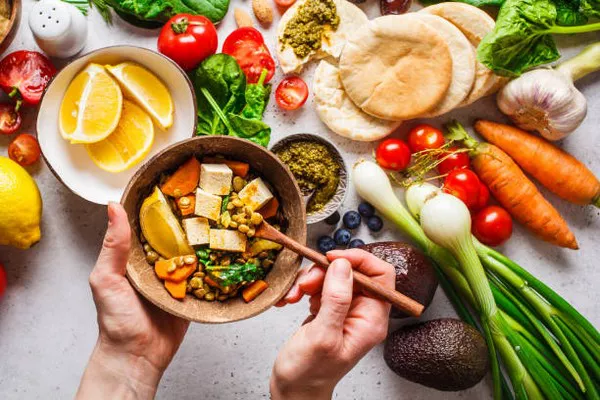When aiming for fitness and weight loss, choosing the right protein sources can make a significant difference. Proteins are essential for muscle repair, growth, and overall body function, but some sources come with high calorie counts. To help you achieve your fitness goals, this guide will explore proteins with the least calories, along with practical fitness and weight loss tips.
Understanding Protein and Its Role in Fitness
Protein is a macronutrient crucial for muscle building and repair. It supports metabolism and helps with satiety, making it a key player in weight management. However, not all protein sources are created equal. Some come with higher calorie counts, which may not align with your fitness goals.
Key Functions of Protein
- Muscle Repair and Growth: Proteins help repair and build muscle tissue, essential after workouts.
- Satiety: High-protein foods help you feel fuller for longer, which can aid in weight loss.
- Metabolism: Protein has a higher thermic effect compared to fats and carbohydrates, meaning it burns more calories during digestion.
Choosing Low-Calorie Proteins
When searching for proteins with the least calories, it’s essential to focus on lean sources. Here are some of the top options:
Lean Chicken Breast
Calories: 165 per 100 grams
Protein: 31 grams per 100 grams
Chicken breast is one of the leanest protein sources available. It’s low in fat and high in protein, making it ideal for muscle maintenance and weight loss. Grilled or baked chicken breast can be added to salads, wraps, or eaten on its own.
Turkey Breast
Calories: 135 per 100 grams
Protein: 30 grams per 100 grams
Similar to chicken breast, turkey breast is another lean protein option. It’s slightly lower in calories and can be used in a variety of dishes, from sandwiches to stir-fries.
Egg Whites
Calories: 52 per 100 grams
Protein: 11 grams per 100 grams
Egg whites are an excellent source of protein with minimal calories. They can be scrambled, added to omelets, or used in baking as a protein boost without adding extra fat.
Fish
Calories: Varies by type (e.g., cod: 82 per 100 grams, tuna: 132 per 100 grams)
Protein: Cod: 18 grams per 100 grams, Tuna: 28 grams per 100 grams
Fish like cod and tuna are great low-calorie protein sources. They provide essential omega-3 fatty acids, which are beneficial for heart health. Opt for grilling or baking fish to keep it low in calories.
Greek Yogurt (Non-Fat)
Calories: 59 per 100 grams
Protein: 10 grams per 100 grams
Non-fat Greek yogurt is packed with protein and relatively low in calories. It can be used as a base for smoothies, in cooking, or as a snack.
Cottage Cheese (Low-Fat)
Calories: 81 per 100 grams
Protein: 11 grams per 100 grams
Low-fat cottage cheese is another protein-rich option with few calories. It’s versatile and can be included in both savory and sweet dishes.
See Also: What Not To Eat When Trying To Build Muscle
Practical Fitness and Weight Loss Tips
Incorporating low-calorie proteins into your diet is just one part of achieving your fitness and weight loss goals. Here are some practical tips to help you along the way:
Balanced Diet
Combine Proteins with Vegetables: Pairing low-calorie proteins with a variety of vegetables ensures a balanced meal rich in vitamins and minerals.
Monitor Portion Sizes: Even low-calorie proteins can contribute to weight gain if consumed in excessive amounts. Stick to recommended serving sizes.
Regular Exercise
Strength Training: Engage in regular strength training to build muscle and boost metabolism. Exercises like weight lifting, bodyweight exercises, and resistance band workouts are effective.
Cardio Workouts: Incorporate cardio exercises such as running, cycling, or swimming to burn calories and improve cardiovascular health.
Hydration
Drink Plenty of Water: Staying hydrated is essential for overall health and supports metabolic processes. Aim for at least 8 glasses of water per day.
Limit Sugary Drinks: Avoid high-calorie beverages that can add unnecessary calories to your diet. Opt for water, herbal teas, or infused water.
Mindful Eating
Eat Slowly: Take your time to chew and enjoy your meals. Eating slowly helps you recognize when you’re full, preventing overeating.
Avoid Distractions: Eat without distractions like watching TV or using your phone. This helps you focus on your meal and its portion size.
Consistent Routine
Set Realistic Goals: Establish achievable fitness and weight loss goals. Track your progress and adjust your plan as needed.
Stay Motivated: Find activities you enjoy and mix up your routine to keep things interesting. Reward yourself for meeting milestones to stay motivated.
Conclusion
Choosing low-calorie protein sources is a smart strategy for achieving your fitness and weight loss goals. Lean chicken and turkey breasts, egg whites, fish, Greek yogurt, and low-fat cottage cheese are excellent options that provide high protein with fewer calories. Combine these proteins with a balanced diet, regular exercise, proper hydration, and mindful eating practices to maximize your results.


